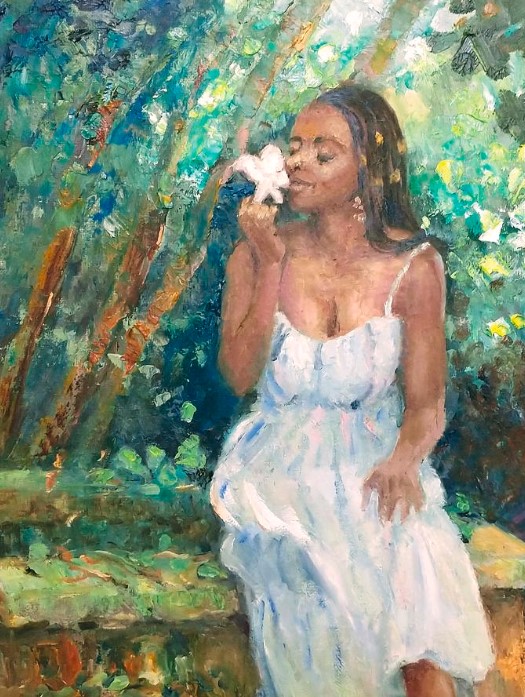Impressionism In Contemporary Art
I’m here to help you understand the captivating world of Impressionism in contemporary art and its surprising connection to the age-old movement known as Impressionism. This isn’t just about recognizing the brush strokes on a canvas; it’s about connecting the dots across centuries of creative expression.
Impressionism In Contemporary Art A surprising number of these innovative approaches stem from the roots laid down by historical movements – prominently, Impressionism.
Now what exactly is Impressionism? Born in France in the late 19th century, this movement centered on conveying the impression of a moment, particularly how light affected the scene. Famed for their loose brushwork and vibrant colors, Impressionists like Monet and Degas broke away from traditional art forms to focus on spontaneity and subjective interpretation.
You’re going to find out about the extraordinary ways contemporary artists have adopted these characteristics. As we move toward Section 2, we’ll trace how the touch of Impressionism has been reimagined in today’s artistic practices.
Tracing the Touch in Modern Artistic Practices
Touch in Modern Artistic Practices
You’re going to find out about the compelling connections between the brushstrokes of the past and the art that fills today’s galleries. The Impressionist movement was not just a historical epoch but a seedbed for techniques and approaches that continue to influence contemporary art.
Through a comparative analysis, we can see the parallels between Impressionism and modern artistic practices. Contemporary artists often employ techniques reminiscent of the soft color palettes, loose brushwork, and emphasis on light that were hallmarks of Impressionism. I’m going to take you through examples that reveal the depth of this influence.
A variety of case studies provide compelling evidence of the Impressionist legacy in contemporary art. Artists like Richard Diebenkorn, with his Ocean Park series, have adapted the Impressionist color exploration to resonate with modern sensibilities. Then there’s Cy Twombly, whose scribbled, quasi-calligraphic style may remind you of the spontaneous, impulsive marks of Claude Monet or Camille Pissarro.
It’s also fascinating to see how the Impressionist preoccupation with themes of light and movement has found its way into the works of current artists. Whether it’s capturing the shifting play of urban light or the transient moments of natural landscapes, contemporary art often mirrors Impressionism’s fascination with fleeting impressions of the world.
Now, let’s turn the page to see how the foundational ideas of Impressionism are conversing with today’s art philosophies. It’s not just about the visual techniques; it’s also about the ideas that drove the movement and how they continue to inspire current creatives. Next, we’ll delve into the esprit de corps that unites the past with the present in the art world.
The Dialogue Between Contemporary Art and Impressionist Philosophies
You might be wondering how a 19th-century art movement still resonates with artists today. The bond between contemporary art and Impressionism is not just aesthetic; it’s deeply philosophical. If you peel back the layers, you’re going to find out about the shared ideals and approaches that tie the two together.
In my opinion, to truly appreciate the conversation between the two, you need to understand the original philosophies of the Impressionists. They rebelled against the rigid art traditions of their time, emphasizing spontaneity, light effects, and scenes of modern life. The Impressionists also cherished the idea of painting en plein air to capture the moment’s essence—something that’s still valued by many artists.
Today’s art doesn’t merely mimic Impressionist techniques; it weaves in their love for capturing the dynamic nature of life. Contemporary artists may not be setting up their easels by the riverside, but they’re certainly bringing the energy and immediacy of the Impressionist ethos into galleries and public spaces. Moreover, they often focus on personal expression and the perception of the world, which were hallmarks of Impressionist philosophy.
Yet, what brings the dialogue into the present is the shared fascination with natural light and its effects. Many contemporary art installations, for instance, use light as a primary medium. This fascination echoes the Impressionist’s obsession with the interplay of light and shadow. So, choose something that resonates with you, and you’ll likely find shades of Monet or Degas there.
When you consider this philosophical synergy, you’re not simply witnessing artistic methods being recycled; you’re seeing a lineage of ideas passing through generations. Don’t worry too much about the exact historical lineage, though—just know that the spirit of Impressionism lives on in the willingness to break boundaries and find beauty in the everyday.
Prospects of Impressionism in Future Artistic Endeavors
So, what’s on the horizon for Impressionism in the tapestry of tomorrow’s art world? I’m about to break down some exciting prospects. Many art enthusiasts and critics alike speculate that the core principles of Impressionism will not only endure but will evolve alongside modern technologies and artistic innovation.
Digital media paves a vibrant path for Impressionism’s evolution. Think about it—digital brushes can mimic Impressionist strokes, and software can play with light in ways Monet could’ve only dreamed of. Up-and-coming artists are already harnessing these tools to create works that salute the past while sprinting into the future.
As we dive into new realities, such as virtual and augmented, there’s a whole new dimension for Impressionism to inhabit. Imagine strolling through a digital garden painted with a contemporary Impressionist palette, with each step exploring an evolving play of light and color. This is no longer the stuff of science fiction but a creative process already in motion.
I’m urging art lovers to keep their eyes peeled. The upcoming waves of artists are likely to be remixing Impressionist ideas with global themes and personal narratives, making this age-old art form speak to the issues of today.
Lastly, if you’re wondering if Impressionism still has a place in the future of art, I’m placing my bets on a resounding ‘Yes’. Its adaptability has always been its charm, and that’s something that will continue to attract artists and admirers alike. I hope that you’ll join me in eagerly anticipating where this journey takes us.



